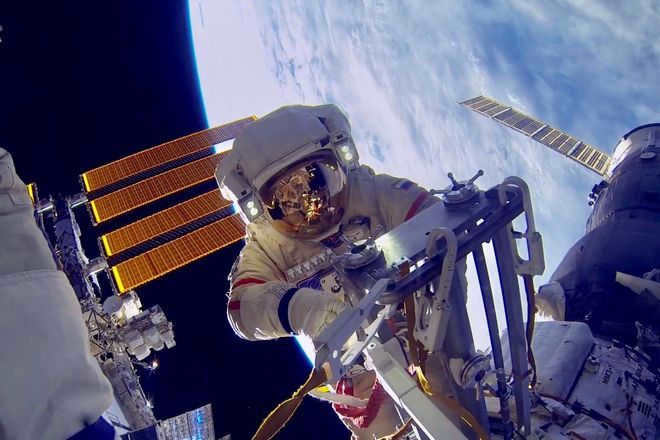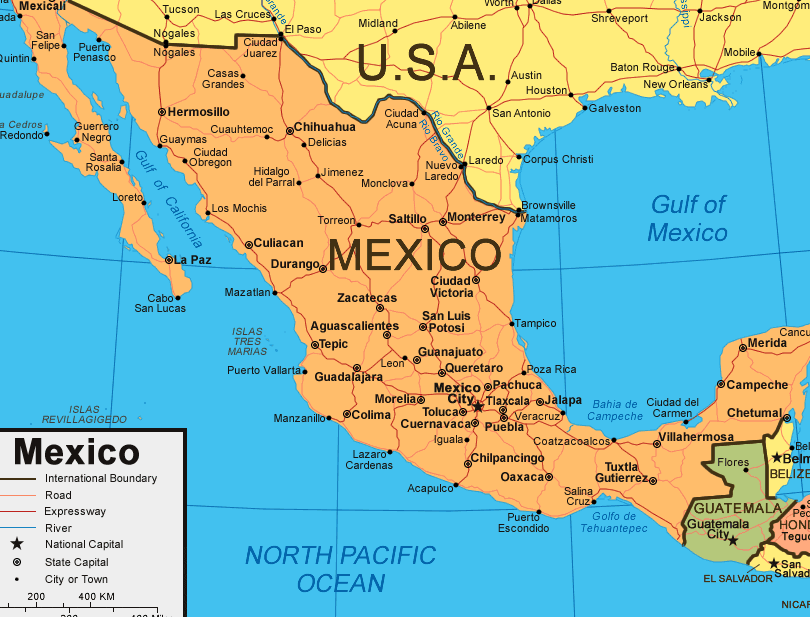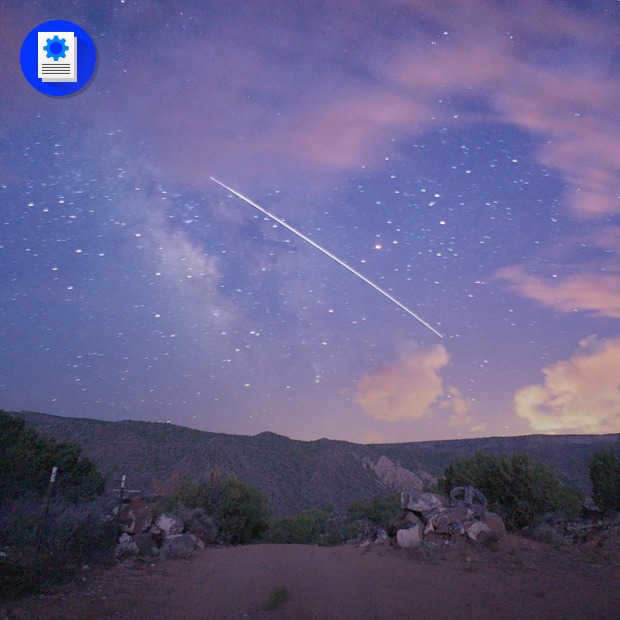

The International Space Station (ISS) crosses our path multiple times daily, but it only becomes visible under specific circumstances. The ISS is illuminated by the Sun and, when it passes at a certain distance, it reflects sunlight just like the Moon does. To catch a glimpse of the ISS from Earth, you need to be in the right position in relation to the Sun and the object itself. We’ve compiled a few tips to help you track the station in the night sky on your own.
Find the Station
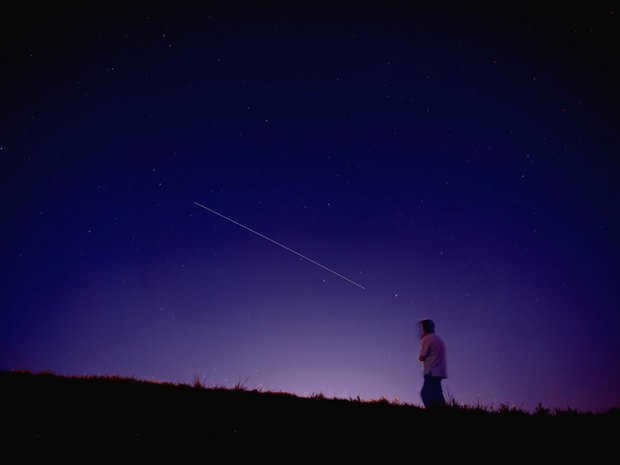

If you want to easily keep track of the International Space Station (ISS), you can subscribe to NASA’s Spot The Station newsletter. This website is specifically designed for enthusiasts like us who are interested in observing the ISS. To sign up, go to the “Sign Up for Alerts” section and choose your country, city, and provide your email address. You can also select the specific flybys you want to track, whether it’s in the morning, evening, or all of them. Once you confirm your registration, NASA will send you email notifications 12 hours before each upcoming flyby.
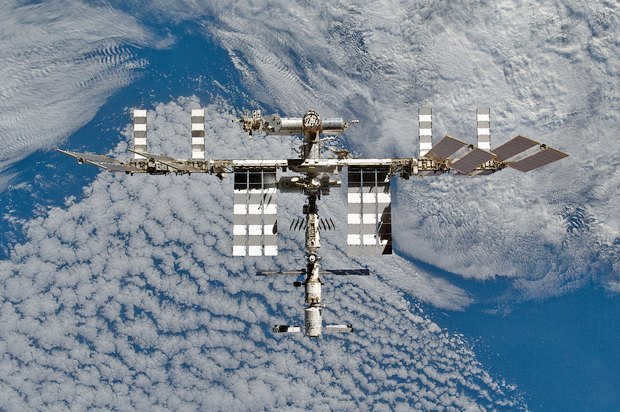
The International Space Station, which was launched for the first time in 1998, is now the biggest structure in space. With the inclusion of the solar panel trusses, the ISS measures 72 meters in length, 108 meters in width, and 20 meters in height, making it comparable in size to a soccer field.
This immense structure serves as a laboratory, factory, testing ground, and home for crew members. It orbits the Earth at an altitude between 330 and 410 km, traveling at an average speed of 27,724 km/h and completing 15.7 rotations around the planet each day. The station’s reflective surface makes it highly visible, even from hundreds of kilometers away, and at times, as it passes through the sky, it shines brighter than any star. As a result, the ISS is often mistaken for a UFO by observers.
Web-based utilities
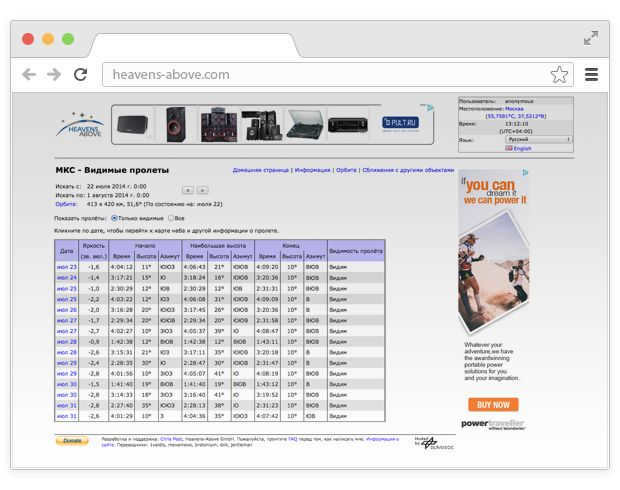
There is a wealth of information available on the internet about the International Space Station (ISS), including various websites and social media accounts that can help you determine when and where to look for the station as it passes overhead. One of the most popular and user-friendly sites is Heavens-above.com, where you can find precise information about the exact time, location, and brightness of the ISS.
When you visit Heavens-above.com, you will be greeted with a visual representation of the Earth and the ISS orbiting around it in real time, allowing you to see the current location of the space station.
In the top right corner, you have the option to select the language and the coordinates from which you want to observe. To accomplish this, simply click on the “Unspecified” link, enter your location in the search bar, and move the red icon as close as possible to your exact position. Once you’ve done that, click on “Apply” and choose ISS from the “Satellites” category. A table displaying the station’s overflights for the next 10 days will then be presented to you.
By selecting each individual date from the table, you will be able to view the trajectory of the International Space Station (ISS) as it travels through the night sky. For those with a good understanding of celestial objects, this will allow you to adjust your camera settings accordingly to capture the ISS as it passes by.
Starting from September, residents of Russia have the opportunity to witness the ISS flying across the night sky each day. The period of time when the ISS is visible began on Sunday, September 20 and will continue until October 10 in certain regions of the country, as reported by Roscosmos’s Telegram channel.
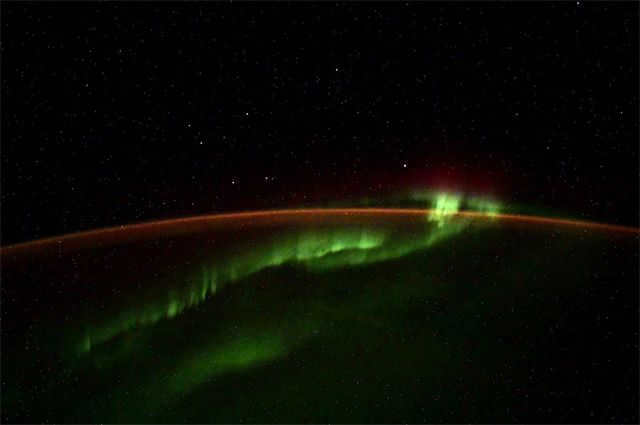
The International Space Station (ISS) completes a full orbit around the Earth approximately every 90 minutes. However, the station is only visible to observers on Earth when it is illuminated by the Sun and in a specific part of its path where it reflects sunlight, much like the Moon does.
Where can I see the International Space Station flyby and how?
You can witness the International Space Station flyby in various locations across Russia. No need for binoculars or telescopes, as the naked eye can spot a constant white “star” in the sky, moving from the southwest to the southeast, as stated by Roscosmos.
The flyby of the ISS, which is observable, will last only a few minutes. As the station enters the Earth’s shadow, the color of the “star” might transform into a reddish-orange hue.
What is the schedule for seeing the International Space Station (ISS) in the Moscow sky?
Residents of Moscow have the opportunity to see the ISS in the sky after 19:00 until October 5. Interestingly, on certain days, it is even possible to spot the station twice. “Roscosmos” advises people in the capital region to keep an eye on the sky during the specified hours:
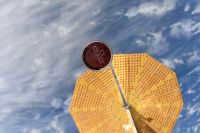

September 21 – 20:22
What are the times when the ISS can be seen in different parts of the country?
The schedule of visible ISS flybys for residents of Vladivostok has been published by “Roscosmos”. It can be accessed on the Telegram-channel of the state corporation (https://t.me/roscosmos_gk).
To determine the overflights for other cities, visit the Heavens Above website, choose your location (the panel in the top right corner), and then select “Satellites → ISS” on the homepage.
Since its conception in 1967, the concept of space tourism has been an evolving dream. However, it wasn’t until 2001 that commercial flights were first launched, initially only to the International Space Station (formerly the Mir station). Over the years, a total of 7 individuals have had the opportunity to embark on this extraordinary journey. The price tag for this “tourist trip” started at $20 million, but due to a surge in demand in 2007, it increased to $40 million. Additionally, for an additional $3 million, a space tourist can venture outside the confines of the spacecraft and experience the wonders of space firsthand.
While there are plans to develop shuttle flights that reach an altitude of 100 kilometers, which would be more affordable, other space tourism projects are also in the works. However, even these “budget” flights will still remain out of reach for the average citizen. Furthermore, not everyone who dreams of flying into Earth’s orbit will be able to do so due to health restrictions.
In view of these circumstances, it can be stated that for the foreseeable future, the only means of observing the Earth as a planet will be through online broadcasting from space.
Factors affecting the visibility of the International Space Station (ISS) from Earth
It is a well-known fact that the satellite experiences sunrise earlier and sunset later than the Earth, which allows for the observation of the station’s trajectory in the night sky for a period of time before dawn and after sunset from the Earth’s surface.
Spotting the ISS in the central regions of Russia is a relatively rare occurrence, largely due to weather conditions, making the event even more intriguing. The optimal time for visually observing the ISS is during the summer, when the Earth’s northern hemisphere is facing the sun and the station remains outside the Earth’s shadow for an extended period after sunset and before dawn.
During the summer months, it is possible to witness multiple flybys of the International Space Station (ISS) in a single night. However, in the winter, the number of overflights can increase to two per night.
There are three key conditions that must be met in order to visually observe the ISS from Earth:
- A clear night sky.
- The ISS orbit must pass over the observer’s location.
- The station must not have entered the Earth’s shadow.
While we cannot control the weather conditions, we can determine the date and time of the ISS flyby using the table provided on the Heavens Above website. If the embedded window of the Heavens Above site is not displayed below, you can access the information through this link.
In 1984, the United States government devised plans for a large-scale scientific project in near space. The magnitude of this undertaking made it challenging for the Americans to execute it on their own, so Canada and Japan joined in the development efforts.
In 1992, Russia became a part of the initiative. Moscow had ambitious plans for the Mir-2 project in the early 1990s. However, economic difficulties hindered the realization of these grand plans. Over time, the number of participating countries eventually grew to fourteen.
Bureaucratic delays plagued the project for over three years. It wasn’t until 1995 that the station’s blueprint was approved, and a year later, its configuration was finalized.
November 20, 1998 marked a momentous day in the annals of global space exploration as the first module successfully reached Earth’s orbit.
Yandex.Maps – a comprehensive satellite map of Russia
Yandex.Maps, a powerful mapping service, serves as a remarkable alternative to Google Maps within our vast country. Yandex, being a domestic company, offers a unique advantage of creating highly detailed and regularly updated maps that surpass the capabilities of Google Maps (Yandex’s domestic maps are updated every two weeks). The map service provides four distinctive display modes, with the satellite display and satellite display with inscriptions being particularly noteworthy. Additionally, users can benefit from various useful features such as the ability to highlight specific areas, cities, or districts, distance measurements, route guidance, and more.
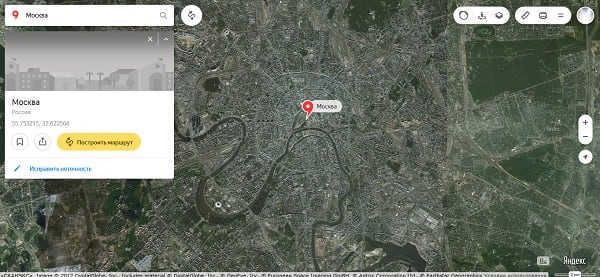
How to Spot the International Space Station
The International Space Station (ISS) can be seen passing through the sky, always starting in the western part. However, the exact starting point may vary. Depending on your location, the ISS may appear low on the horizon or high up in the sky. Various apps and websites provide information on the direction and elevation of the ISS’s path, including the starting and ending points. Additionally, these resources also provide data on the maximum altitude that the ISS will reach during its passage.
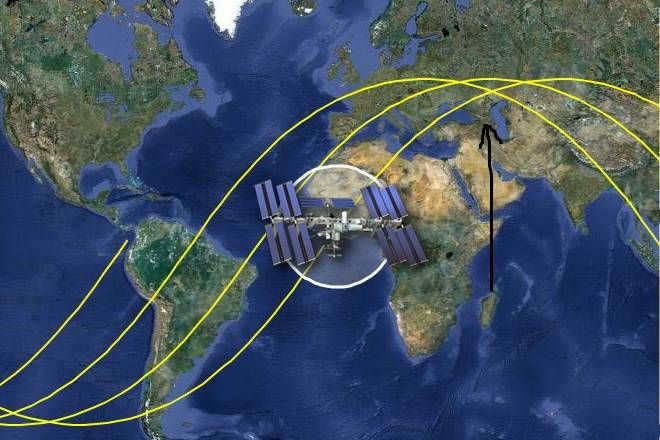
For instance, if the highest elevation is mentioned somewhere between 74-90 degrees over the sky, the International Space Station (ISS) will pass nearly directly above. If you are unsure where to look, a useful tip is to extend your arm and use your clenched fist as a guide. Each clenched fist is approximately equal to 10 degrees. Therefore, you can estimate the location by counting the number of clenched fists required. For example, if the ISS is expected to appear 40 degrees above the horizon, you would look approximately four clenched fists above the horizon.
Not only can you observe the ISS during the evening, but also in the morning. This is because both the ISS and the Sun are positioned in such a way that they illuminate the spacecraft during these times. The light we perceive from the ISS is actually sunlight that has been reflected.
Every night, the position of the ISS in the sky undergoes a transformation. The space station does not adhere to a static route or orbital path. As a result, there are frequent opportunities for observers on Earth to witness its visible passes, with new opportunities arising approximately every 6 weeks.
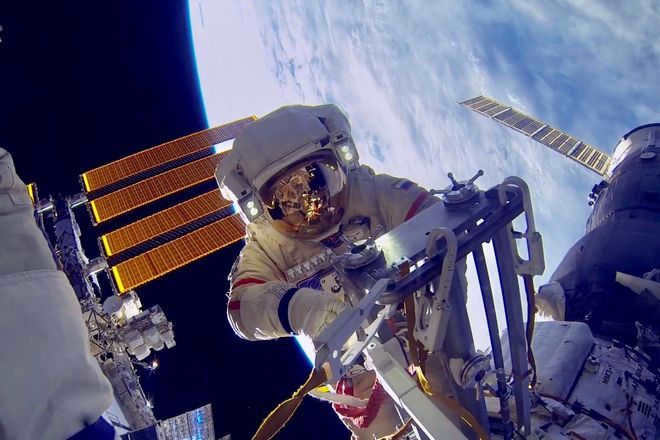
Occasionally, when a spacecraft like a Soyuz crew capsule or Progress supply ship is dispatched to the ISS, you may observe celestial bodies appearing in front of or behind the station as it traverses the heavens. These objects could either be in close proximity to the station or separated by a span of minutes. Witnessing the ISS in motion is an awe-inspiring spectacle! However, it is important to bear in mind that there are individuals aboard this rapidly moving luminous speck!
Nokia Maps – an innovative mapping service provided by Nokia
By collaborating with Here, a company specializing in cutting-edge 3D-modeling, Nokia has developed a unique and free alternative to other map services. While the functionality may be somewhat limited at this stage, with a focus on a select number of American and European cities, this resource offers invaluable information across various domains. It offers a range of map types, including a visually stunning 3D-map, a highly detailed satellite map, and more. Engaging with this project enables users to plan routes to truly captivating tourist destinations.
Experience the power of Nokia and Here’s groundbreaking map product.
This is fascinating
Nowadays, with the help of numerous meteorological satellites, there is no need to rely on TV weather forecasts to find out about the current geomagnetic situation. Below, you will find SWPC satellite geomagnetic charts that provide the opportunity to observe the geomagnetic situation online from the convenience of your own residence. This can be particularly beneficial for individuals whose well-being is directly influenced by the surrounding environment. Analysis of …
An innovative online planetarium has been created that offers not just entertainment, but also scientific exploration. This virtual planetarium allows users to input their location and the desired date, and it will generate a simulation of what the sky will look like during that time period.
Researchers have recently discovered a new issue with the active asteroid Phaethon. By studying the way light is reflected from different angles on its surface, astronomers have determined that the asteroid may actually reflect less light than previously believed. To further investigate this phenomenon, a new mission called DESTINY+ has been approved to study Phaethon. The amount of light reflected by an object is not solely determined by its albedo, which is the percentage of light that it reflects…
Exceeding the speed of light still remains an elusive goal for spacecraft, but two recent experiments have shed some light on the issue of Einstein’s theory of relativity’s speed limit of 300,000 kilometers per second. While previous attempts have been made by physicists, two separate groups of scientists have now reported their efforts to push this boundary and surpass the universal limit…
Today, on July 21, 2014, the world is celebrating the 45th anniversary of the historic Apollo Program, which resulted in the first manned mission to the moon. This momentous occasion marked the American response to the early 1960s space achievements of the USSR, particularly their first manned flight beyond Earth’s atmosphere and into outer space… Despite…
Amazing details regarding the lives of astronauts – Have you ever wondered how astronauts take care of their hair while in space? Or what happens when they cry in zero gravity? It’s commonly known that space alters the usual laws of physics, which means that everyday activities are not the same as on Earth. This is partially true. For instance, astronauts…
Workplace Accidents
In spite of the numerous safety measures in place at the station and on the ships that served it, there have been unfortunate incidents. One of the most significant accidents was the Columbia shuttle disaster, which took place on February 1, 2003. Although the shuttle was not docking with the station and was on its own independent mission, this tragedy resulted in a ban on all future space shuttle flights. The ban was only lifted in July 2005.
As a result, the completion of construction was delayed, as only Russian Soyuz and Progress spacecraft were able to travel to the station. These became the sole means of transporting individuals and various cargo to orbit.
In addition, there were incidents aboard the International Space Station (ISS) in various years. In 2006, there was a smoke issue in the Russian segment, and computer failures occurred in 2001 and twice in 2007. However, the most challenging situation for the crew was in the fall of 2007 when they had to repair a broken solar panel that occurred during installation.
What can be observed via the ISS webcams
The National Aeronautics and Space Administration (NASA), the American space agency, provides live streaming from the webcams installed on the ISS. The cameras often capture images of the Earth, including clouds, cyclones, anticyclones, and the surface of the seas and oceans when the ISS passes over the day zone. When the webcam is positioned vertically, it offers a clear view of the landscape details, but even when it is pointed at the horizon, interesting sights can still be observed.
If you observe closely when one of the video players broadcasts an image from a vertically directed webcam to the Earth, you will notice how the transmitted picture moves in relation to the satellite on the map. This makes it easier to spot specific objects for observation, such as islands, lakes, riverbeds, mountain ranges, and straits.
Occasionally, the image is streamed live from webcams inside the Station, allowing us to watch the American segment of the ISS, observe the actions of astronauts, and witness ongoing experiments.
During important events on the Station, such as docking, crew changes, and spacewalks, the online broadcast features audio. This allows us to listen to conversations between the Station crew members themselves, as well as with the Mission Control Center or the replacement crew on the approaching docking ship.
Occasionally, the sound accompaniment is activated without any apparent cause, even when the video communication with Earth is disconnected.
The International Space Station (ISS) completes a full revolution around the Earth every 90 minutes, passing through both the night and day zones of the planet. To find out the current location of the Station, refer to the map displaying its orbit above.
Now, let’s take a look at what can be observed from space in the Earth’s night zone:
- If the webcam is directed towards the horizon, you may catch a glimpse of the brightest stars and the Moon.
- During thunderstorms, you may witness the mesmerizing flashes of lightning.
- In clear weather conditions, you can marvel at the illuminated* lights of cities and other inhabited areas.
To witness the glowing urban landscapes, it is necessary to maximize the online streaming player. In this mode, the Earth’s shimmering lights will gracefully glide across the screen, distinct from the motionless star-like distractions. Although the lights are partially visible when the player is minimized, they lack the vibrant colors and multitude present in full screen mode.
Who is the proprietor of the International Space Station (ISS)?
Despite its international status, the contributions of the participants vary on the ISS. The United States is the main manufacturer and owner of most orbital blocks. The Russian segment consists of five main modules. Japan owns and operates the Kibo module, while the European Union, represented by the European Space Agency, owns the Columbus Science Laboratory. Canada played a significant role in the station’s creation as the manufacturer of several components and the owner of the Orbital Boom with cameras. In the initial stages of development, the United Kingdom and Brazil also participated in creating the station.
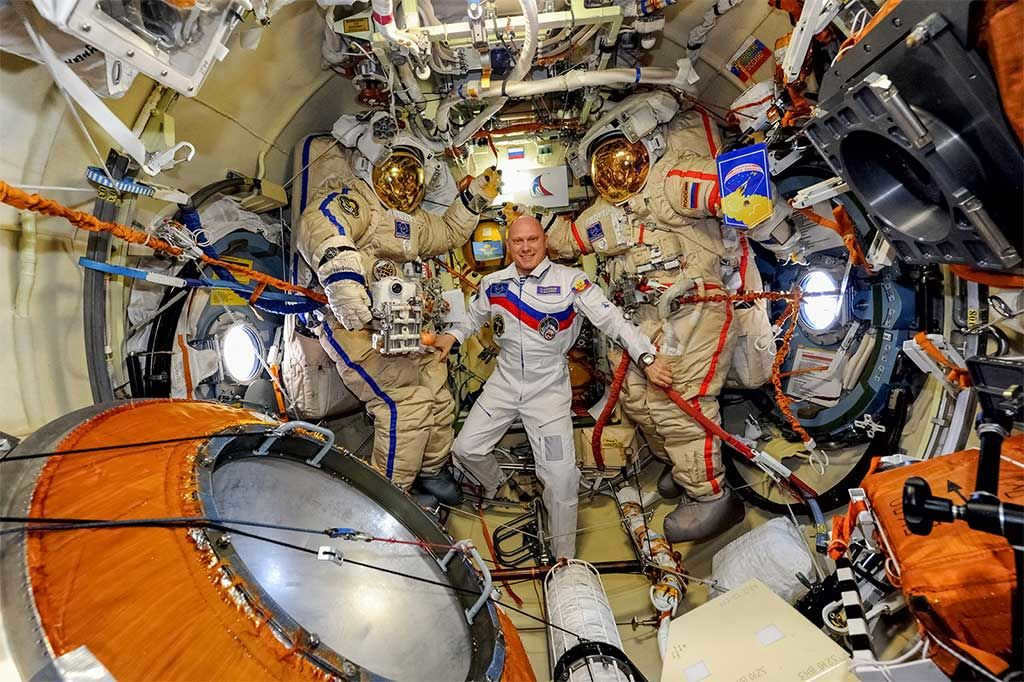
Because there are many countries involved in the project, there is often a question: “Who is the owner of the International Space Station (ISS)?”. The legal status of the ISS is determined by international agreements, where each state has jurisdiction over the segment it owns. The entire station can be divided into two main sections:
- The Russian segment, which is solely owned by the Russian Federation;
- The U.S. segment, which is owned by the United States and allows astronauts from other project participants.
Whom to greet during the visible flyby of the ISS?
According to reports from Roscosmos, there are currently three members of the research team aboard the ISS, including Russian citizens. However, you can send symbolic greetings not only to the commander. The complete list of researchers working on the station is as follows:
- Russian citizen 1
- Russian citizen 2
- Russian citizen 3
Furthermore, if everything goes according to plan, the ISS team will soon be joined by additional members. NASA intends to supplement the team with their own specialists from “Roscosmos”. These specialists are Robert Benken and Douglas Hurley, both Americans, who are scheduled to fly on the Crew Dragon on May 28, 2020.
Earlier, there was discussion surrounding the necessity of discarding the platform. However, these speculations remained unsubstantiated rumors. Presently, the station remains essential. The concept of its establishment traces back to the 1990s. The visionaries behind this idea were Russian individuals who aimed to broaden scientific exploration of the vastness of space. Initially, this proposal appeared fantastical, but following the project’s execution, it became evident that a research base of this nature is now indispensable in space.
Following the collaboration with the Americans, the two parties initiated a dynamic partnership, successfully accomplishing in a span of five years what the rest of the world had only fantasized about. The official inauguration of the station, which embodied a genuinely global character, occurred on November 20, 1998. It was during this momentous occasion that the initial Russian component, manifesting as a functional-cargo unit, was dispatched.
Evolution of the International Space Station
The International Space Station (ISS) is a remarkable structure that encircles the Earth, functioning as a multifaceted orbital laboratory, manufacturing facility, testing ground, and living space. Its crew members engage in a wide range of experiments, spanning from the fields of biology to astronomy. These experiments are not only crucial for scientific advancements but also help pave the way for future missions to the Moon and other celestial bodies.
Construction of the ISS commenced in 1998 with the launch of its first module. Over the course of approximately two years, the initial framework of the station took shape. Finally, on November 2, 2000, the station welcomed its first human occupants, marking the beginning of its continuous operation. Today, the ISS not only serves as a cutting-edge research laboratory but also acts as a vital hub for international spacecraft. The United States, Canada, Japan, several European countries, and Russia are the key partners involved in the operation of the ISS, with a total of 16 countries participating in this groundbreaking endeavor.
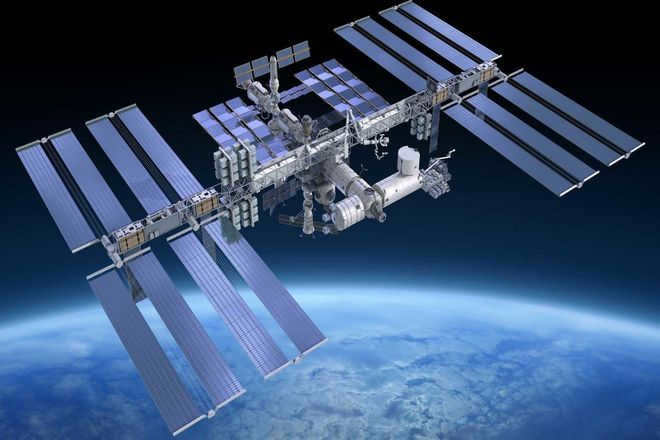
The International Space Station (ISS) has dimensions of approximately 72 meters in length, 108 meters in width, and 20 meters in height. It orbits at an altitude ranging from 330 kilometers to 410 kilometers above the Earth’s surface. With an average speed of 27,724 km per hour, it completes around 15.7 revolutions per day.
One of the remarkable aspects of the ISS is its visibility from Earth. It can be observed with the naked eye, appearing as a bright, rapidly moving star. Although it might resemble an airplane, the absence of flashing lights distinguishes it from conventional aircraft. Moreover, the ISS can be much more luminous than an airplane and appears to effortlessly glide across the sky. The duration of its visibility varies, ranging from a few seconds to several minutes.
As the ISS orbits the Earth, it typically completes a full revolution in approximately 90 minutes. Consequently, fortunate observers may have the opportunity to witness two, three, or even four flybys during a single evening or morning.
ISS: Flight Altitude
Where can the International Space Station (ISS) be found? The ISS is positioned in the Earth’s orbit, but it would be incorrect to claim that it remains at a consistent altitude.
The average altitude of the ISS’s orbit is approximately 357 kilometers. Why is it considered average? This is because the distance between the Earth and the ISS in kilometers can vary due to various factors.
One major factor is the atmosphere. Despite the fact that the atmosphere is extremely thin at such a high altitude, it still exists. The particles in the atmosphere have a “slowing down” effect on the station’s movement along the Earth’s orbit. These decelerations are consistently observed as oscillations.
Furthermore, the International Space Station (ISS) is continuously endeavoring to “descend” towards the Earth due to the gravitational force exerted by our planet. However, the presence of the atmosphere acts as a sort of suspension, similar to a hammock, preventing the ISS from falling. Additionally, the station experiences a downward acceleration that is perpendicular to its velocity along the orbit. While it attempts to descend, the high speed at which the man-made satellite travels allows it to bypass the point of descent, making it impossible.
Moreover, the altitude of the ISS is in a constant state of fluctuation. Over time, the station gradually approaches the Earth, necessitating regular course adjustments by scientists to bring it back up.
Additionally, there exist numerous artificial “permanent satellites” known as space debris that are circling the Earth. To avoid collision with this debris, the ISS must skillfully navigate through its various “components”.
The explanation as to why the ISS doesn’t plummet to the Earth is quite clear. However, the precise distance at which the ISS is positioned from the Earth remains a question.
The altitude of the ISS’s orbit above the Earth ranges from 280 to 340 km. Interestingly, if the altitude were to stabilize at a constant value of 400 km above sea level, there would be significantly less need for adjustment – or scientists would need to make adjustments far less frequently. At such a distance from the planet, the impact of the remnants of the thin atmosphere is practically negligible.
What is the current altitude of the International Space Station (ISS) in relation to Earth? As of January 2018, the station was “elevated” to a height of 600 km in order to facilitate the docking of the Progress MS-8 spacecraft. During the winter months of 2018, the average altitude reached approximately 404.8 km.
Track the ISS – Map for tracking the International Space Station
This information has been provided by the European Space Agency.
Using this interactive chart, you can determine the exact time and location of the ISS flyby. If the weather conditions are favorable and there are no clouds obstructing the view, you will have the opportunity to witness the awe-inspiring glide of the station, a true testament to the progress of our civilization.
Flying amidst the backdrop of the Ursa Major constellation
When considering the latitude of Moscow, the optimal moment to witness this phenomenon would be when the flight path reaches an altitude of approximately 40 degrees above the horizon, specifically during the twilight hours following sunset and preceding sunrise.
Viewing the International Space Station (ISS) from a three-dimensional perspective on June 15, 2013.
Just so you’re aware, there happens to be a complimentary Android app available (in Russian) for mobile devices which can provide you with advance notifications about when the station will pass over your current location.
Place
4K MKC Tour, Online ISS Webcam Live
The ISS experiences periods of illumination and darkness, which happen approximately every 45 minutes. This distinction is illustrated in the trajectory diagram through the use of yellow shades.
Below, you have the opportunity to watch the live broadcast of NASA-TV. The content of these broadcasts usually consists of English-language television stories about space-related subjects, often featuring repeated segments. It is not uncommon to see unedited footage as well.
To view the broadcast in full screen, click on the “expand arrows” located at the bottom right corner of the player, just above the “live” button.
A touch of history. The International Space Station represents a combination of several different space station initiatives, including the American Freedom, the Russian Mir-2, the European Columbus, and the Japanese Kibo. The main modules of the station are owned by Russia, the United States, the European Union, and Japan. The ISS is an incredibly costly facility, with current estimates placing the price tag at 100 trillion euros. Due to budget limitations, the companies involved in these projects were forced to merge into a single, multinational program. The ISS project was initiated in 1994 with the Shuttle-Mir program, and the first module, Zarya, was installed by Russia in 1998. Assembly efforts continued, and as of February 2010, the station consisted of 13 interconnected modules.
Take a look at this three-dimensional model showcasing the assembly of the ISS:
The International Space Station (ISS) generates power through a combination of solar panels and batteries. There are 16 solar panels installed on the ISS external linkage, while the Russian modules have four smaller batteries. This setup allows the station to operate even when it is not in direct sunlight.
As the ISS orbits Earth, it stays at an altitude range of 278 km (173 mi) to 460 km (286 mi). It travels at an average speed of 27,724 km/h (17,227 mph), completing approximately 15.7 Earth orbits per day.
For a visual of the ISS orbiting Earth, watch the video below:
Research being conducted on the International Space Station (ISS) is expanding our understanding of the effects of prolonged human space travel on the body. Scientists are currently studying the muscle atrophy, bone mass loss, and changes in bodily fluids that occur in living organisms in space. This valuable data will be used to determine the feasibility of further space exploration and long-duration human missions.
As of 2006, studies have shown that the loss of bone mass and muscle atrophy experienced during long interplanetary journeys, such as a six-month trip to Mars, pose a significant risk of fractures and mobility issues for astronauts upon landing on another planet. To address these concerns, extensive medical research is being carried out on the ISS in collaboration with the National Space and Biomedical Research Institute (NSBRI).
Here is an image (on the right) showing what a candle burning in a weightless environment looks like.
The International Space Station is currently conducting research on the impact of a weightless environment on the growth, development, and internal processes of plants and animals. Scientists are also studying the behavior of fluids in microgravity to improve their understanding of fluid dynamics. In microgravity, liquids can mix more thoroughly, so physicists are examining the behavior of fluids that do not mix on Earth:
Furthermore, scientists are studying reactions that are affected by low gravity and low temperature to gain a deeper understanding of superconductivity. This is just a glimpse into the wide range of research being conducted by astronauts on the ISS.
This section provides
flight information


Discover how to observe the International Space Station (ISS) as it glides silently and smoothly across the nighttime sky, and contemplate the astronauts currently aboard.
Since 1998, the ISS has been circling our planet.
From practically anywhere on Earth, with a clear night sky, you can catch a glimpse of the ISS.
To the naked eye, it resembles a brilliant star swiftly traversing from one horizon to the other.
It vanishes as abruptly as it materializes.
How can you determine when the ISS will be visible from your particular location?
Locate the station
NASA offers a fantastic resource to assist you in this endeavor. The Locate a Station tool enables you to register for notifications, ensuring that you are informed when the International Space Station (ISS) will be visible from your specific location, regardless of where you are in the world. Additionally, there is a map-based functionality that enables you to monitor the station’s trajectory as it passes over your position in the nighttime sky.
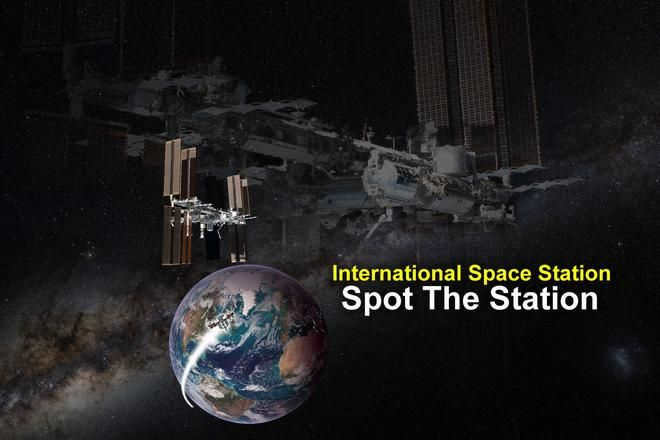
If you sign up for NASA’s Find the Station service, you will only receive notifications when the ISS is clearly visible from your location for a minimum of a few minutes. If you reside above 51.6 degrees latitude (such as St. Petersburg at 59°57), you may need to check the website for surveillance opportunities. This is because notifications in this area will be relatively rare.
The notifications provide details on where to locate the ISS in the night sky. Simply take note of where the sun sets, and you can easily determine the direction in which the station will appear. The altitude at which the station will appear is specified in degrees.
Keep in mind that when the angle is 90 degrees, the station is directly overhead. If the angle is less than 90 degrees, the station will be visible between the horizon and the 90-degree mark. The station is extremely bright, making it difficult to overlook if you’re facing the correct direction.
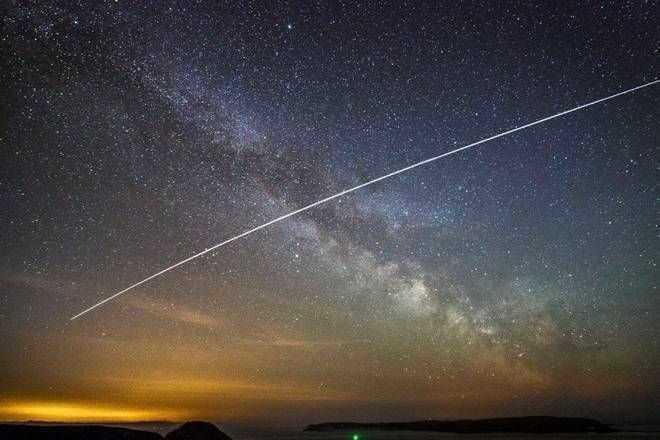
The Origins of the International Space Station
The International Space Station (ISS) is an enormous space station that currently orbits the Earth. Its main purpose is to function as a laboratory, factory, testbed, and even a home for astronauts. The crew members on board carry out various experiments, covering a wide range of scientific disciplines including biology and astronomy. These experiments are crucial for future missions to the moon and beyond, as they help scientists and engineers gather invaluable data and insights.
The initial launch of the first module of the International Space Station (ISS) took place in 1998, marking the beginning of the station’s construction. It was a two-year endeavor that culminated in the human occupation of the station on November 2, 2000. Since then, the ISS has remained in continuous operation, serving as a crucial orbiting laboratory and a hub for international spacecraft. The United States, Canada, Japan, several European countries, and Russia are the key partners involved in ISS operations, with a total of 16 countries participating in the project.
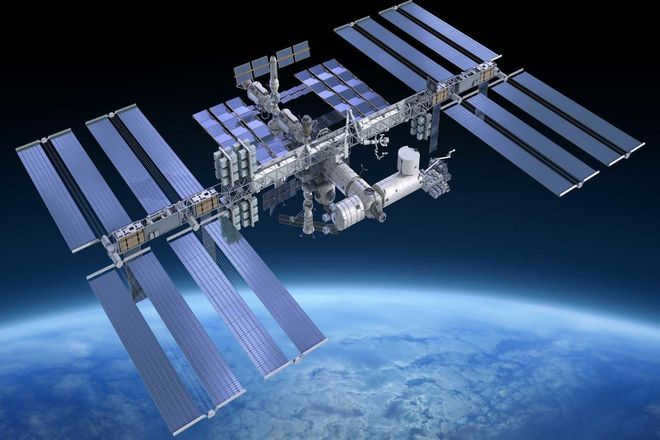
The dimensions of the space station are quite impressive. It measures approximately 72 meters in length, 108 meters in width, and 20 meters in height. It is positioned at an altitude ranging from 330 kilometers to 410 kilometers above the Earth’s surface. In terms of movement, the space station travels at an average speed of 27,724 km per hour and completes approximately 15.7 revolutions per day.
One of the most fascinating aspects of the ISS is that it can be observed from Earth. It appears as a remarkably radiant and rapidly moving celestial body that could easily be mistaken for an airplane. However, unlike aircraft, the space station lacks flashing lights and emits a much brighter glow. It glides gracefully across the sky, offering moments of visibility that can range from a few seconds to several minutes.
As it orbits the Earth, the International Space Station typically completes one full circle in approximately 90 minutes. This means that if you’re fortunate, you may have the opportunity to witness two, three, or even four flybys in a single evening or morning.
How to Observe the International Space Station (ISS)
The International Space Station (ISS) can be seen in the sky starting from the western part, although the exact starting point may vary. For some viewing locations, it may appear low on the horizon, while for others, it can be seen at a higher altitude. Various apps and websites can provide information on the direction of the ISS’s passage, including the starting and ending points’ degree above the horizon. Additionally, these sources also provide details on the ISS’s maximum altitude during its passage.
For further reading, you may be interested in exploring the significance of medieval inventions, which dispel the misconception of the so-called “dark” times.
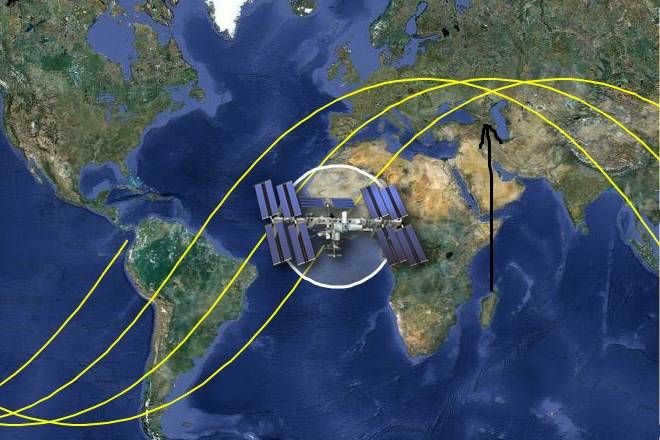
For instance, if the highest point is documented as being somewhere between 74-90 degrees above the skyline, the International Space Station (ISS) will pass directly overhead. If you are unsure where to look, a good reference point is to extend your fist at arm’s length, which is roughly 10 degrees. You can then use the appropriate number of fists to determine the location. For example, if the ISS is expected to appear 40 degrees above the horizon, you should look four fists above the horizon.
Not only can you observe the ISS in the evening, but also in the morning. During these times, both the ISS and the Sun are ideally positioned to illuminate the spacecraft. The light that we perceive from the ISS is actually sunlight that has been reflected.
Every night, the position of the International Space Station (ISS) in the sky undergoes a change. The orbital path of the space station does not remain constant, resulting in different routes being followed. As a result of this variation, there are frequent opportunities to witness the ISS with the naked eye, with good visible passes occurring approximately every 6 weeks at any given location on Earth.
